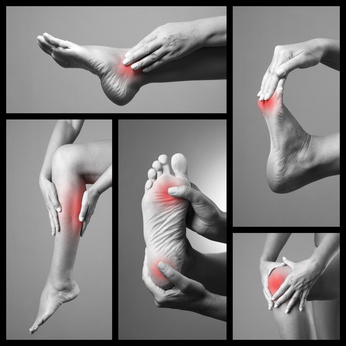Contents
Arthritis, Rheumatism, Osteoarthritis and Gout – What’s the difference?
Joint pain and diseases of the joints can be complex. There are a range of aliments that can impact joints. Some of the most common conditions include arthritis, rheumatism, osteoarthritis and gout. Although it’s possible to suffer from a combination of these conditions, it is important to know the difference.
Arthritis
Arthritis is a term that describes in excess of 100 different medical conditions that cause joint inflammation and stiffness. Arthritis can affect one or multiple joints. Often the pain is constant and localised in the affected joint(s). Arthritic pain is caused by a variety of factors: joint inflammation, joint damage from disease, joint wear and tear, fatigue, and muscle strains as a result of forced movements on stiff joints.
Although there are many different forms of arthritis, osteoarthritis is the most common. This is frequently associated with older generations. There are also forms of arthritis that can strike people at a very young age. Both men and women are susceptible to arthritis, although different forms may develop at stages of life. In general, women tend to show more arthritic symptoms post menopause, while men can develop symptoms earlier.
 Rheumatism
Rheumatism
Rheumatism is a non-specific term used to describe medical conditions that affect joints and connective tissue. It’s characterised by pain and inflammation of the tissues and muscles surrounding the joints.
Rheumatoid arthritis is an autoimmune form of arthritis. It’s considered as a severe form of arthritis. The immune system of people suffering from rheumatoid arthritis attacks synovium1. This is the soft lining that occurs around the joints. As a result, the joints become inflamed, stiff and tender as fluid builds up in the affected area.
One major difference is that the exact cause is poorly understood, although there’s likely to be a connection between hormones, genetics and environmental factors. Rheumatoid arthritis tends to affect smaller joints, such as the ankles and hands.
Rheumatoid arthritis can develop quickly, typically within a year. It affects more women than men and usually develops between 35 and 45 years of age. In the UK, it’s estimated that over 500,000 people suffer from rheumatoid arthritis 2.
Osteoarthritis
They symptoms of osteoarthritis are basically similar to that of rheumatoid arthritis. However, osteoarthritis is a degenerative disease. Over time, the joint cartilage and the underlying bone breakdown. Joint injuries early in life can mark the beginning of osteoarthritis when articular cartilage becomes damaged. Osteoarthritis causes pain and stiffness of the joints. The knees, hips, wrists and thumb joints are most commonly affected.beurocrat
Symptoms of osteoarthritis typically present from middle age onward. It’s common in both men and women, although men tend to develop the disease younger than women. By the age of 60, osteoarthritis is a common condition amongst both men and women. As the most common joint-related disease, it’s estimated that over 9 million people in the UK suffer from osteoarthritis3.
Gout
Although another form of arthritis, there is a difference. Gout is a disease in which uric acid isn’t properly metabolised. This leads to an accumulation of uric acid, most frequently in the smaller bones of the feet. Uric acid crystallises in joints, often in the big toe. These uric acid deposits (also known as tophi) appear as lumps under the skin. Gout can cause swelling, pain and joint stiffness. Often the affected area is red and hot to touch. In addition to affecting the big toes, gout may also affect the ankles, knees, heels, wrists, elbows and fingers.
The onset of gout can be sudden. Around four times more men experience gout than women. Over the age of 35, men tend to be more prone to this disease. Generally, women aren’t affected by gout until after menopause. In the UK, approximately 285,000 adults suffer from gout4.
Bibliography:
- Ogrendik M. 2013. “Rheumatoid arthritis is an autoimmune disease caused by periodontal pathogens”. Int J Gen Med 6, 383-6. ↩
- Symmons D, Turner G, Webb R, Asten P, Barrett E, Lunt M et al. 2002. “The prevalence of rheumatoid arthritis in the United Kingdom: new estimates for a new century.” Rheumatology. 41(7):793–800. ↩
- Arthritis Research UK. 2013. “Osteoarthritis in general practice – data and perspectives” (PDF 4.2 MB). ↩
- Arthritis Research UK. “Gout.” Retrieved 29-10-2013 from http://www.arthritisresearchuk.org/arthritis-information/data-and-statistics/gout.aspx. ↩






